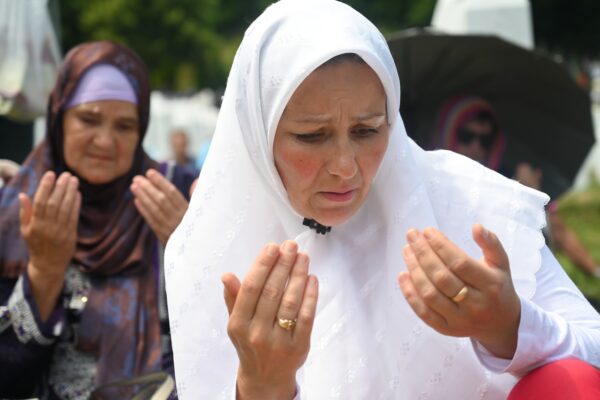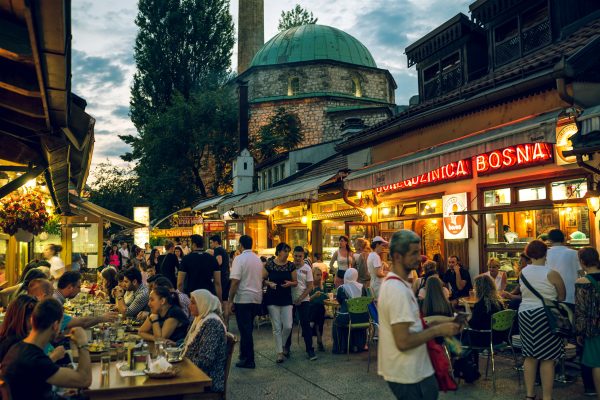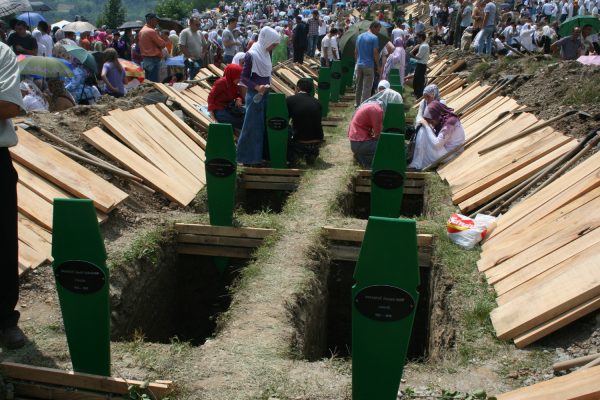A historical viewpoint on why and how something so horrendous happened in Bosnia – and the ramifications of the genocide today.
A historical viewpoint on why and how something so horrendous happened in Bosnia – and the ramifications of the genocide today.
The Srebrenica massacre, often regarded as one of the most horrendous acts of genocide in recent history, occurred from 11 July to 22 July 1995 during the Bosnian War. It took place in the town of Srebrenica, located in eastern Bosnia and Herzegovina.
This brutal chapter, still fresh in the hearts of those who lost their relatives, saw one of the worst examples of genocide and war crimes the world has ever seen.
In a statement marking the 28th anniversary of the July 11 genocide, the European Union called the anniversary of the Srebrenica massacre a “painful memory”. In a video message to mark the day, UN Secretary-General Antonio Guterres also said, “The Srebrenica massacre was the worst crime on European soil since World War II.”
What Happened: A Historical Viewpoint
The reason behind this massacre was fierce nationalism and bigotry.
Bosnia and Herzegovina had a large number of Muslims then, and was then part of the Republic of Yugoslavia. The country gained independence in March 1992 through a referendum – however shortly after, a civil war started between Bosnian Muslims, Croats, and Serbs.
Historically speaking, the Serbs, an ethnic group from Eastern Europe, settled in the region in the 7th century. Parallel to this, Bosnia gained independence from Hungary around 1200 AD, and over the next 260 years, it became an independent Christian state.
In the 15th century, Sultan Fateh Muhammad brought Bosnia under the Ottoman Empire. Many Christians became Muslims at that time, and the number of Muslims in that area started increasing. Muslims continued to rule Bosnia on behalf of the Ottoman Empire.
At the end of the 19th century, the Ottoman Empire was at war with Russia. Bosnia seceded and fell under the rule of Austria-Hungary. After World War I, the area became part of Yugoslavia. After the separation from the Ottoman Empire, other Muslims from the Balkans migrated to Bosnia. At that time, the number of Jews in the area also began to increase.
After Bosnia became independent, the Serbs – mostly Christians – felt defensive about certain rights they might lose in Bosnia and thus the brutal civil war began. On July 11, 1995, the Serbs captured the city of Srebrenica – a majority Bosnian-Muslim city.
Declared a “safe haven” by the United Nations, persecuted Muslims from other parts of Bosnia came here and sought refuge. Dense refugee camps were built in the city, with these refugees dealing with fear, hunger, and disease.
Because Srebrenica was declared a safe zone by UN Resolution 819, Dutch peacekeepers deployed by the UN were deployed there as well. But in their presence, the Serb forces captured the city, with the Dutch peacekeepers remaining silent.
The United Nations then imposed an arms embargo on the area, but the Serb militia ignored this ban. The UN troops did not go to attack the Serbs either, instead, they took away the light weapons that Bosnian resistance fighters had. Persecuted Muslims ask the United Nations to return their weapons, but the UN-appointed Dutch commander Thom Karremans rejected the request.
Failure of the UN in the Srebrenica Massacre
The United Nations’ inability to prevent the Srebrenica massacre was a major stain on its peacekeeping mission during the Bosnian war. Despite designating Srebrenica as a buffer zone under UN protection, the international community has failed to provide sufficient security and respond effectively to the ongoing atrocities.
Instead of warnings of an impending Serb attack in Bosnia, the international community failed to grasp the gravity of the situation and the possibility of a massacre. It is well documented that the scarcity of coordination of UN allied ‘peacekeeper’ troops in the ground position to security and rescue operations and its late response also led to mass destruction and human casualties.
Srebrenica underlined the confinements and complexities of peacekeeping missions within the confrontation of heartless animosity. It provoked a basic reassessment of the UN’s approach and drove consequent changes in UN peacekeeping operations to avoid comparative disappointments in the future.
What Happened in Srebrenica
From the first day of the occupation of Srebrenica, brutal torture continued. In the beginning, they singled out the Bosnian men, and brutally shot and killed them, dumping the bodies in mass graves.
From July 11 to July 22, 1995, massacres continued across the city, with refugee camps declared by the United Nations not left out. In front of the peacekeepers, Serb forces killed 8,372 Bosnian Muslims. On the first day of the massacre, July 11, nearly two thousand men and boys were killed, with about 15,000 people fleeing Srebrenica to the mountains.
Later, the Serb soldiers found and killed another 6,000 Muslims from the mountain forest. From 1992 to 1995, more than 200,000 Bosnians were killed and nearly 200,000 refugees were displaced by the attacks of the Serb forces. Serbia later apologized for the incident but refused to call it a genocide.
Significance of Remembrance
The memory of the Srebrenica massacre is crucial to never forget the tragic events and venerate the collision victims and their families. Efforts have been made to commemorate the massacre, promote reconciliation, and prevent future atrocities, including an annual memorial service held in Srebrenica on July 11 to remember the massacre.
Many attend, including survivors, victims’ families, political leaders, and international representatives. The ceremony included prayers, speeches, and the burial of newly identified victims, serving as a solemn reminder and offering healing and unity.
To promote the memory of Srebrenica, educational and exhibition efforts have also been initiated. The Srebrenica Memorial Center, a nearby facility, serves as a museum and educational hub. It covers the massacre, shares personal stories, and promotes understanding, tolerance, and peace.
International Day of Remembrance
The United Nations has declared July 11 as the International Day of Remembrance for the Victims of the Srebrenica Genocide, and this day is observed around the world to honor victims and raise awareness of the consequences of hatred, intolerance, and genocide.
It serves as a platform to advocate for justice, prevent mass atrocities, and promote human rights. It also serves as a stark reminder of the consequences of unchecked hatred and the importance of promoting a culture of peace, reconciliation, and respect for human dignity.
Above all, the massacre is a reminder of the devastating consequences of hatred, intolerance, and discrimination.
So in a nutshell, the ultimate feedback that any healthy mind can offer for the Muslim community from the Srebrenica massacre is the pursuit of justice, one of unity, resilience, and proactive engagement in promoting peace and preventing atrocities.
References
‘The Fall of Srebrenica and the Failure of UN Peacekeeping’ by Human Rights Watch published on October, 1995, vol.7.no. 13
‘Srebrenica: A Cry from the Grave’ by Hasan Nuhanović (Published by Saqi Books, 2005)
‘Srebrenica: Record of a War Crime’ by Jan Willem Honig and Norbert Both (Published by Penguin Books, 1997)
‘Endgame: The Betrayal And Fall Of Srebrenica, Europe’s Worst Massacre Since World War II’ by David Rohde ( published by Penguin books, 1997)





